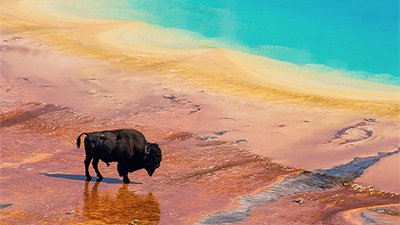
Scientists Coming to Grips with Catastrophic Geology
ScienceDaily: “Canyon Carved in Just Three Days in Texas Flood: Insight into Ancient Flood Events on Earth and Mars” With a headline worded as if written by a young-earther, the press release for a new study of Texas’s Canyon Lake Gorge reveals that an increasing number of scientists are coming to grips with catastrophic geology.
Young-earth scientists once caused a major controversy (indirectly) for arguing that Grand Canyon was formed rapidly. But recent events have given scientists of all stripes an appreciation for the geologic power of “a lot of water in a little time”—which contrasts with the commonly accepted model of “a little water in a lot of time,” used to explain such formations as Grand Canyon.
“A lot of water in a little time”
In October 2007, we reported on the overflow of Canyon Lake and the formation of Canyon Lake Gorge, which occurred in 2002 (before News to Note was around)
Now, California Institute of Technology geologist Michael Lamb and Texas State University geographer Mark Fonstad report in Nature Geoscience some of the implications that the indubitably rapid formation of the canyon has for mainstream geology. The press release states:
Our traditional view of deep river canyons, such as the Grand Canyon, is that they are carved slowly, as the regular flow and occasionally moderate rushing of rivers erodes rock over periods of millions of years. Such is not always the case, however.
The scientists used a combination of aerial photography and field measurements of the area where the gorge now lies to estimate the rate of erosion during the flood. Amazingly, the team determined that the rate of erosion was limited only by the amount of sediment the floodwater could carry—which speaks volumes for the erosive power of the retreating waters of a global Flood.
“This is one of a few places where models for canyon formation can be tested because we know the flood conditions under which this canyon formed,” Lamb stated. His point, while presumably not intended as such, reminds us that when it comes to most geologic formations, we haven’t observed how they formed. All bring some sort of presuppositions to the table—such as that natural processes have persisted, basically unchanged, over time, or that God sent a worldwide Flood to destroy humankind.
We can’t be any clearer than what we said back in 2007 about the significance of the gorge: “[I]f a single overflowing spillway in Texas can carve a mile-and-half-long, 80-foot-deep gorge in three days, imagine the geological havoc that a worldwide Flood—and its retreat—would cause over the span of more than a year!”
For more information:
Remember, if you see a news story that might merit some attention, let us know about it! (Note: if the story originates from the Associated Press, Fox News, MSNBC, the New York Times, or another major national media outlet, we will most likely have already heard about it.) And thanks to all of our readers who have submitted great news tips to us.
(Please note that links will take you directly to the source. Answers in Genesis is not responsible for content on the websites to which we refer. For more information, please see our Privacy Policy.)
Recommended Resources

Answers in Genesis is an apologetics ministry, dedicated to helping Christians defend their faith and proclaim the good news of Jesus Christ.
- Customer Service 800.778.3390
- © 2024 Answers in Genesis




